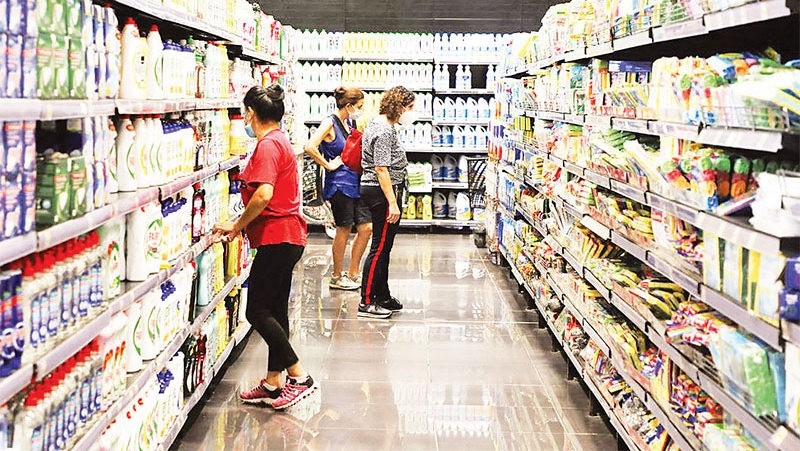The Food and Agriculture Organisation of the United Nations (FAO) said that world food prices soared by 28% in 2021, marking the highest level in a decade.
Accordingly, FAO's food price index averaged 125.7 points last year, the highest level since 2011. Food prices according to FAO statistics have climbed especially high in November 2021 with an average of 134.4 points, an increase of 27.3% over the same period last year. The sharp increase in demand for flour, eggs and dairy products contributed to a significant advance in world food prices in November.
However, the main “culprit” behind the increasing food prices in the past year was the disruption in the production and supply of agricultural products caused by the COVID-19 pandemic, while agricultural output declined and demand increased. The FAO said that global cereal production reached only 2.791 billion tonnes in 2021 while the estimated figure given in October 2021 was 2.793 billion tonnes.
The worrisome problem is that food prices have not shown any signs of “cooling down” in 2022 as well as in the following years. FAO senior economist Abdolreza Abbassian said that the COVID-19 pandemic and increasingly unusual climate change will dampen expectations regarding the stability of the food market in 2022 and the coming years. The continuous escalation in food prices is raising three major concerns for countries.
Firstly, rising food prices have exacerbated hunger in some areas of the world. A report from FAO Regional Office for Latin America and the Caribbean in late December 2021 warned that people in Latin America and the Caribbean are facing severe food insecurity while the poverty rate in the region is at its highest level in the past 15 years.
According to the above report, one in 10 people in Latin America and the Caribbean is currently undernourished and this number has been increasing along with the complicated development of the pandemic. The region's “hot spots” of hunger and malnutrition include Haiti, where the malnutrition rate is as high as 46 percent, and Venezuela, where the malnutrition rate is 27.4 percent.
Secondly, rising food prices are causing many countries around the globe to grapple with the fight against inflation. Rising prices of food and essential goods have created “inflationary spirals” in Latin America, the US, and the eurozone.
Thirdly, high food prices make people's lives more difficult and may “spark” demonstrations and riots in many countries. Last year, a wave of violence occurred in many African countries including South Sudan, Nigeria, Ethiopia, Somalia, Burkina Faso, and others. The “Dark Continent” also witnessed coups in Mali, Guinea, and Sudan. Many analysts have warned that food insecurity may be a “spark” to the “dynamite barrel” of instability in Africa in the near future.
In a message released on the occasion of the International Day for the Eradication of Poverty in 2021, United Nations Secretary-General Antonio Guterres said that extreme poverty was on the rise for the first time in 20 years and called for the world to be committed to building a better future.
In the context of economic difficulties because of the pandemic and many potential instability risks, the restoration of production, supply of agricultural products and ensuring food security must be considered by governments as an urgent issue.
















